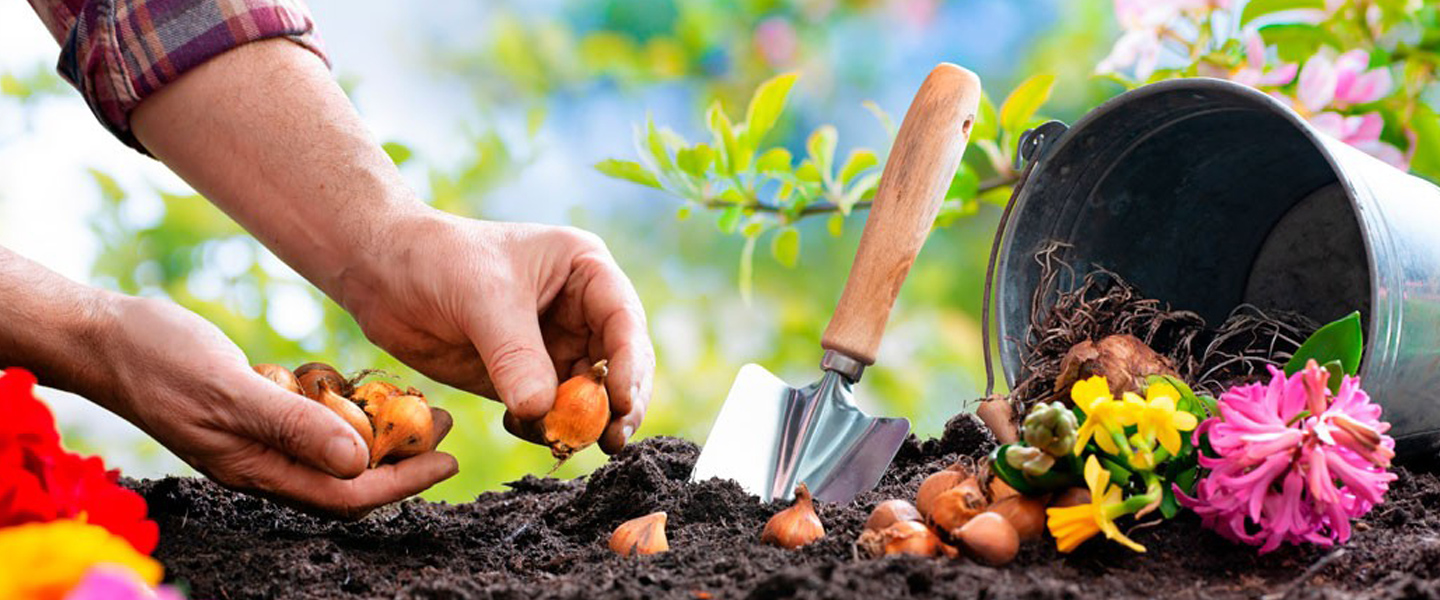Take Advantage Of Falling Temps To Spruce Up Your Landscaping
Just because the days are growing shorter—and colder—doesn’t mean you can’t still spend time outdoors tending to your landscaping. The summer blooms may have faded and your vegetables harvested, but fall is a good time to plant bulbs, shrubs and trees while cleaning up your landscape before winter.

Want A Pop Of Color In Spring?
Plant bulbs like crocus, tulips, daffodils, alliums, hyacinths, snowdrops, and irises in the fall once the soil temperature reaches 40 to 50 degrees Fahrenheit. This allows spring-blooming bulbs to cool in the ground and root before freezing. Come March and April, you’ll have a dazzling display to ring in spring.
Summer-blooming “tender” bulbs like dahlias, gladiolus, tuberous begonias, and elephant ears, on the other hand, often will not survive the harsh winters that bring frigid temperatures to much of Illinois. In those cases, it’s best to dig up the bulbs within a few days of frost occurring and store them inside during the coldest months of the year. Avoid harming plants by digging several inches away from the exposed foliage to prevent accidentally cutting or “skinning” the bulbs underground. Loosen the soil all around the plant, lift the entire clump, remove excess soil around the bulbs, and discard any that are damaged.
Don’t assume it’s safe to dig up old bulbs or plant new ones—underground utility lines may be buried in the area you’re working in, even if you’ve planted items there in the past. Over time, lines may have shifted from soil erosion or other environmental factors and inserting your shovel into the earth just a few inches to the left or right, or digging even a little deeper could cause you to strike a critical utility line. Reduce the chance of causing a service outage or harming yourself or your family, always contact JULIE before starting your fall landscaping project. JULIE is Illinois’ FREE notification service to prevent underground utility damages.
Refresh Your Landscape
You don’t have to wait until spring to replace shrubs or add new bushes. Many can be planted in autumn, as long as it’s several weeks before the first frost. Lower air temperatures help hardy shrubs establish strong root systems before going dormant in winter. Plus, pests tend to be less while rain is more frequent, increasing your new bush’s chances at success.
Fall weather in Illinois can be unpredictable. So be prepared and contact JULIE at least two business days before you want to start your landscaping project. You can submit a locate request 24/7/365 online or via phone. Hiring a professional landscaper? They must contact JULIE, too.
Get In An Extra Growing Season
Certain varieties of trees such as elm, honey locust, maple and crabapple, along with pine and spruce do especially well with autumn plantings. That’s because the soil tends to be warmer than in the spring after winter’s thaw and because typical fall moisture and precipitation help trees establish roots to grow and thrive.
Dig In
Cooler weather may make it easier to do some of the hard work that comes with maintaining your beautiful landscaping, but you still need to practice safe digging. It doesn’t matter if you’re replanting in the same location, only digging a few inches down, or adding something new—always contact JULIE before you dig. Every project. Every time. Underground utility lines are buried on your property and striking one can cause serious damage. Know what’s below and stay safe so you can appreciate your landscape for years to come.

Safe Digging Tip: Always contact JULIE before you dig to have utility lines on your property located for free by our members. Valuable utility lines may be buried just beneath the surface and hitting one could disrupt critical services, cause serious harm to you or your family, or even result in costly repairs and fines.






 CONTACT US
CONTACT US